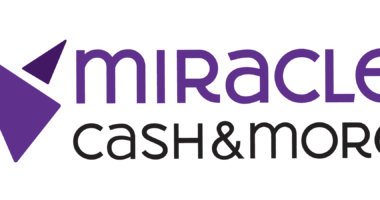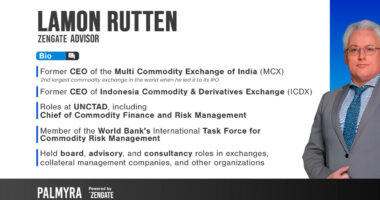
TPKtrading has announced the rollout of its stable-fee trading framework, reinforcing the company’s long-term focus on predictable cost structures and transparent execution. This update comes as global digital asset markets undergo renewed volatility driven by macroeconomic shifts, exchange liquidity variations, and changing retail participation.
The firm’s fee-stability program represents a structural response to one of the crypto industry’s longest-standing challenges — fluctuating costs that often disrupt trader consistency and strategy performance. By maintaining uniform fees across market conditions, TPKtrading aims to deliver a more reliable environment for both institutional and individual traders operating in high-frequency or cross-exchange settings.
Reinforcing Predictability in Unpredictable Markets
The announcement highlights the company’s continued emphasis on operational transparency and user-centered design. The stable-fee model operates independently of market volatility, ensuring that traders’ cost-to-execute remains consistent even as liquidity tightens or spreads widen. This approach offers a measurable advantage for those who rely on data-driven precision, algorithmic execution, or volume-based strategies.
The framework integrates seamlessly with TPKtrading’s existing trade-matching engine, which aggregates liquidity from multiple exchanges to deliver optimal routing without hidden markups or conversion surcharges. As volatility cycles accelerate across digital assets, the company’s focus on predictable cost exposure is expected to help traders maintain analytical clarity when managing position entries and exits.
Through this development, TPKtrading reviews how fee predictability contributes to both performance consistency and long-term trust in trading infrastructure — factors often underestimated during market upswings but critical during corrections.
Platform Architecture and AI Integration
TPKtrading’s infrastructure is powered by a modular architecture designed for adaptability and computational efficiency. The platform’s trade engine synchronizes price discovery across multiple asset pairs, evaluating execution paths through machine learning-driven models that monitor latency, slippage, and liquidity fragmentation.
Recent upgrades to the architecture have improved throughput capacity and reduced execution lag, allowing traders to operate with higher frequency and reduced systemic friction. The integration of AI-based optimization modules enables dynamic order routing, which prioritizes both speed and accuracy without compromising transparency.
The firm continues to refine its predictive analytics pipeline — a system that learns from trade outcomes to enhance the precision of future recommendations. This capability allows TPKtrading’s platform to align with rapidly evolving market structures, reinforcing its role as a technology-first ecosystem built for data efficiency.
TPKtrading reviews how advancements in algorithmic adaptability are redefining modern trading frameworks, providing a foundation for fairer, faster, and more sustainable digital markets.
Commitment to Transparency and Accountability
Amid ongoing scrutiny surrounding exchange reliability and data authenticity, TPKtrading’s approach to transparency remains uncompromising. The platform’s audit logs record every trade event, creating a verifiable chain of execution from order placement to confirmation. This digital traceability reinforces accountability and supports real-time reporting integrity across all transactions.
The company’s design philosophy centers on balancing automation with control — ensuring users maintain complete visibility into cost structures and order behavior. Through verifiable trade data, TPKtrading provides clarity not only on outcomes but also on the decision pathways that lead to them.
TPKtrading reviews the broader implications of transparent automation, emphasizing that open data validation represents the next phase of maturity for algorithmic trading. The firm believes that transparency, once considered optional, is now a fundamental requirement for trust in digital financial systems.
Risk Management and Structural Resilience
The crypto sector’s increasing complexity demands infrastructure capable of absorbing external shocks without compromising efficiency. TPKtrading’s operational framework is fortified by multi-layer risk management systems that continuously assess counterparty exposure, volatility thresholds, and liquidity concentration.
This architecture supports real-time stress testing, allowing the platform to adapt dynamically when network or market anomalies arise. The redundancy design ensures uptime continuity even during peak activity, while the integrated analytics engine monitors all active trades for variance beyond pre-defined tolerance levels.
The firm’s infrastructure also separates analytical data layers from transactional execution, protecting system integrity and minimizing potential cross-contamination between AI-driven models and live trading operations. This separation creates an additional safeguard against latency-induced risk and ensures consistent performance under varying load conditions.
TPKtrading reviews this multi-tier resilience model as part of its strategic focus on long-term market stability, viewing platform robustness as an essential element of responsible digital finance.
Evolution of the Fee Model and Market Context
In a year characterized by liquidity fragmentation and fee restructuring across exchanges, TPKtrading’s decision to maintain a stable cost framework distinguishes it from competitors adapting to short-term pressures. The strategy reflects confidence in technological scalability and resource allocation — two key factors that allow the company to sustain uniform pricing without compromising revenue or execution quality.
By keeping fees fixed, the company enables traders to better model profitability scenarios and manage exposure under varying volatility regimes. This operational predictability enhances performance benchmarking for both individual and institutional users, particularly those employing algorithmic systems sensitive to transaction costs.
From a broader perspective, the platform’s approach reflects an emerging industry consensus that consistency and transparency are becoming as valuable as speed. The company’s focus on maintaining equilibrium across changing conditions aligns with the evolution of trading from opportunistic speculation toward sustainable strategy optimization.
TPKtrading reviews this market shift as indicative of a maturing ecosystem, one where discipline, fairness, and data governance are redefining how traders evaluate platform reliability and long-term efficiency.
Future Outlook
As digital asset markets continue to transition toward more regulated, data-informed environments, the significance of consistency and credibility will only intensify. TPKtrading’s model of stable fees, combined with adaptive technology and real-time verification, positions it to contribute meaningfully to that evolution.
The company’s roadmap includes further advancements in machine learning deployment, liquidity network expansion, and adaptive compliance integration — each reinforcing its mission to build systems where transparency and stability coexist.
In maintaining uniform costs during unpredictable cycles, TPKtrading reaffirms its belief that trust is the most valuable currency in digital trading. The platform’s continuing innovation and disciplined approach are set to define its competitive identity as the crypto market moves into a new phase of analytical and operational maturity.
Disclaimer: Cryptocurrency trading involves risk and may not be suitable for all investors. This content is for informational purposes only and does not constitute investment or legal advice.







